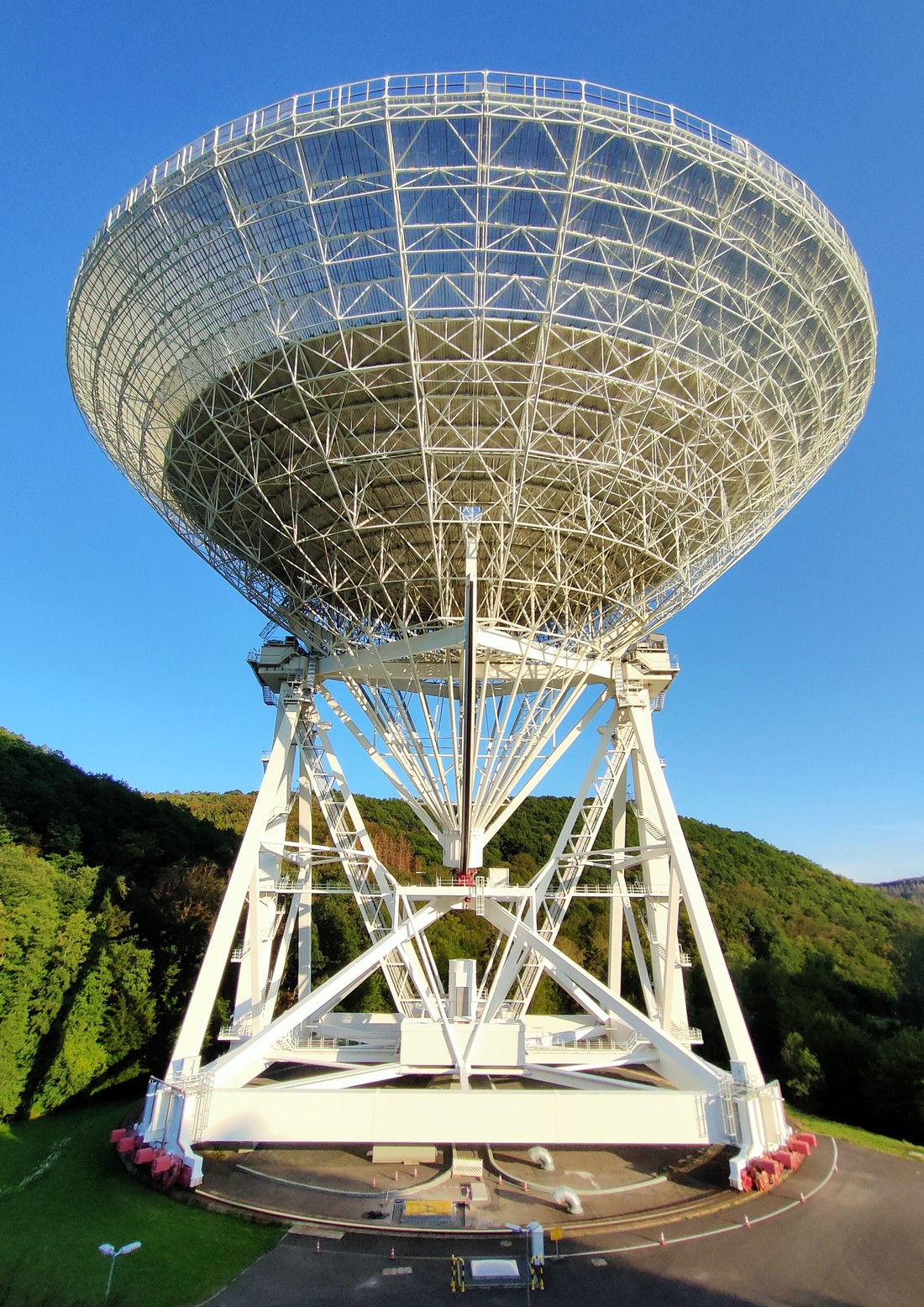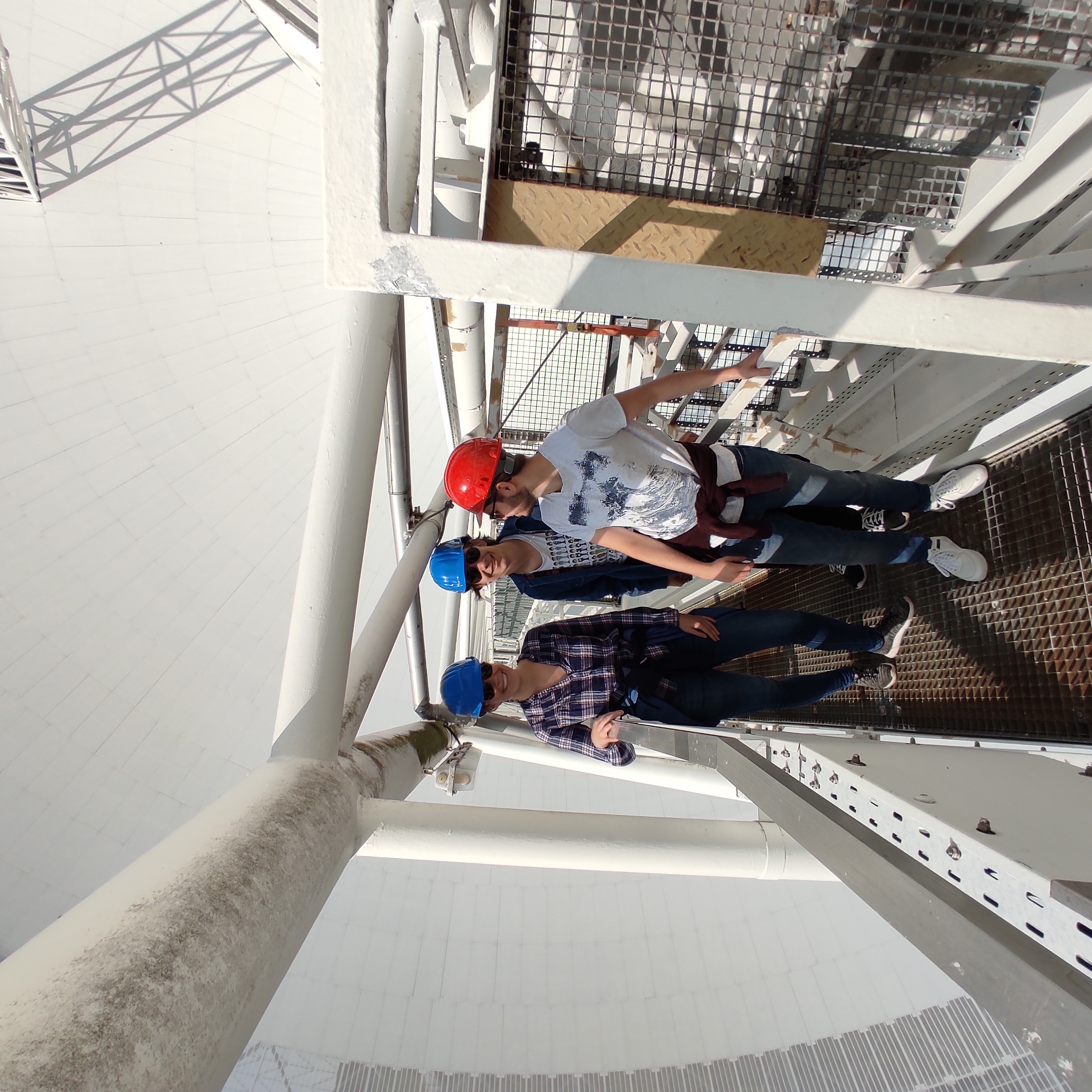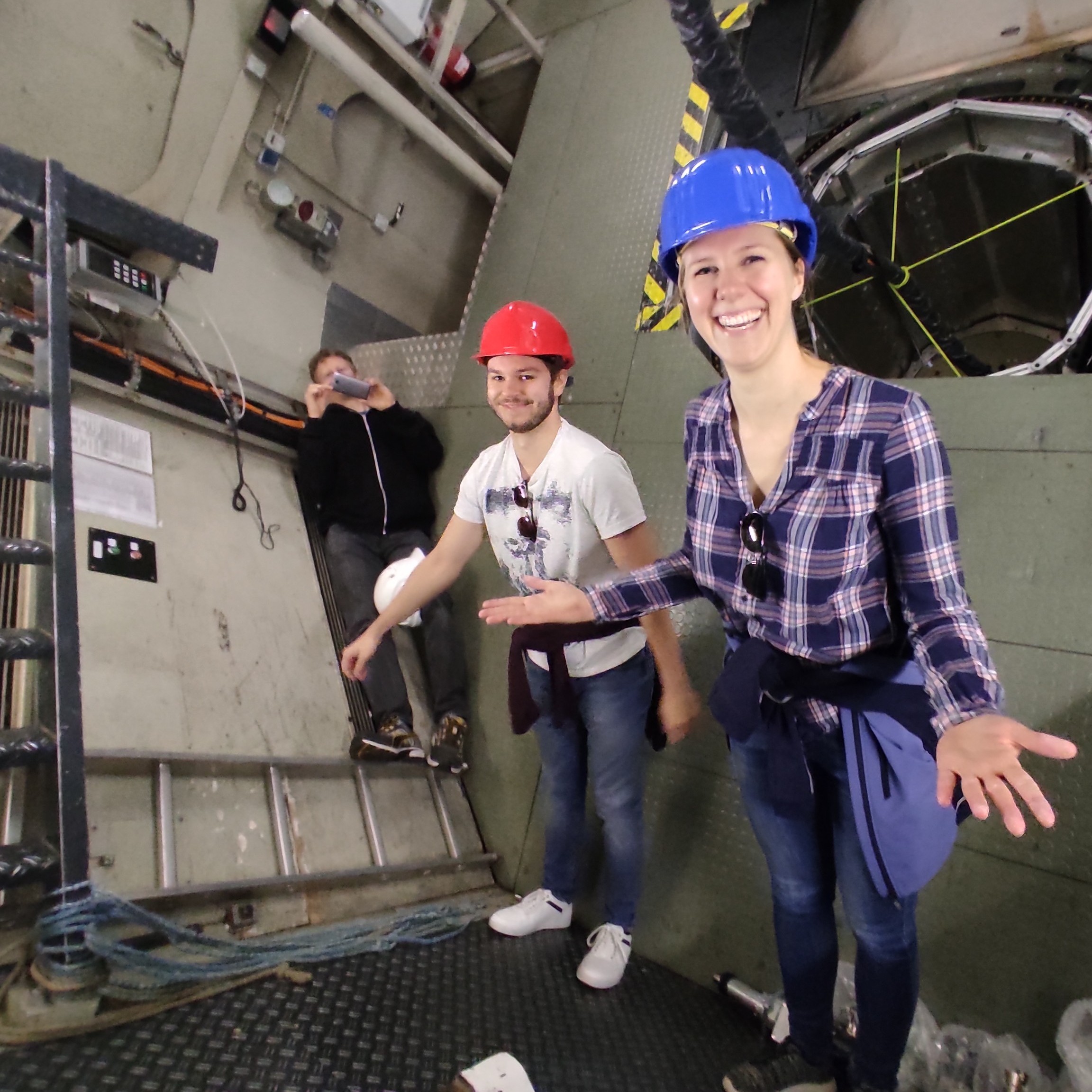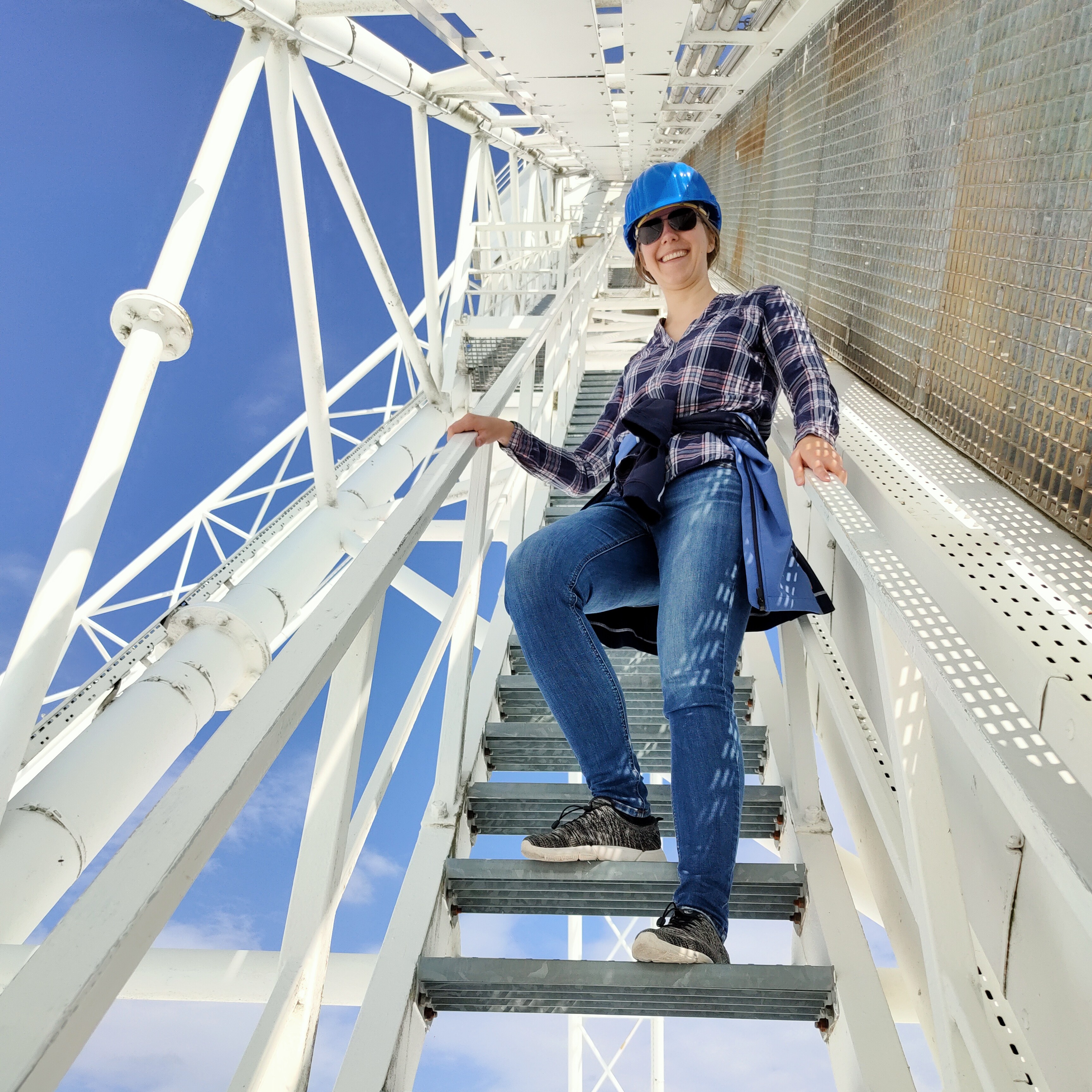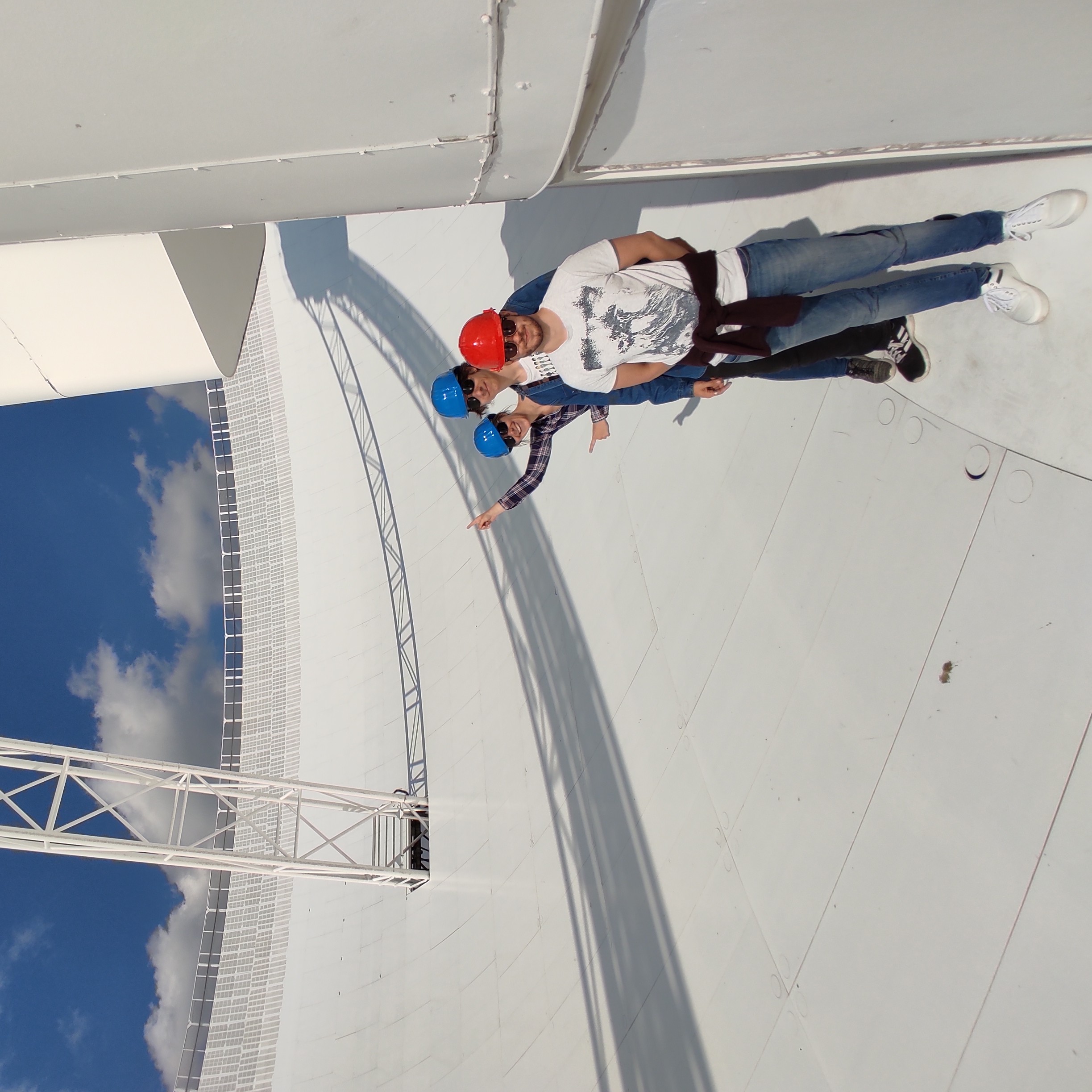An observing night at the Effelsberg radio telescope
and what it feels like to be in a moving telescope
Images by Florian Eppel, Andrea Gokus & Jonas Heßdörfer.
Although I have been working with data from different telescopes during my PhD, I have never observed astronomical sources for the purpose of my work in person, until now. You may ask why I have so far not gathered data myself, since for an astrophysicist this is usually part of the job description. However, the data, which I had requested via proposals before, were X-ray and gamma-ray data, which can only be collected with satellites. These satellites are controlled via ground-stations by specifically trained people and can not be directly operated by those who requested an observation. Hence, working in high-energy astrophysics can sometimes leave you envious of radio and optical astronomers, who get to travel to the most amazing observatories around the world.
Luckily for me, one of my two PhD supervisors, Prof. Kadler, succeeded with his proposal of a new monitoring program with the Effelsberg radio telescope, and so I got the chance to actually do some hands-on observing, for the first time during my PhD. Since the observing strategy of the monitoring program is to look at the same objects over and over with a few weeks apart, a little bit more (wo)manpower is required for the following months to come, and so I was accompanied by two students from the University of Würzburg, who will do their Bachelor's and Master's thesis in our Astro group, respectively. From Franconia it is a comparably short trip to get to the 'Eifel', a low mountain range in the western part of Germany, in which the radio telescope is located close to a city called 'Bad Münstereifel. In comparison to flying to some remote part of the world to get to the telescope, our travel was quite unagitated. Nevertheless, when we arrived at the small village of Effelsberg, I got truly excited when we saw the huge white structure of the radio dish peering out of the valley in which it was built.
The great thing about observing at radio frequencies is that you don't necessarily have to wait until it's dark, so shortly after we arrived, we could start with our observations, even though it was only 4 PM (and not yet dark outside). The monitoring program, for which we were doing these observations, focuses on a specific type of blazar, a so-called TeV-blazar. A blazar is an active galactic nucleus (AGN) exhibiting a collimated relativistic outflow that is pointing towards us. This outflow is called a 'jet', and due to its material moving with a significant percentage of the speed of light towards us, blazars appear exceptionally bright compared to other AGN and can be seen across all wavelengths. The emission we see from these blazars range from the radio up to gamma-rays, however only a few of them reach the highest gamma-ray energies at Teraelectronvolt (TeV). These form a small group of currently less than 80 TeV-blazars among a few thousand blazars that have been detected in the overall gamma-ray regime. Blazars are a particularly variable kind of AGN and as such, it makes sense to get an update every once in a while regarding their current state of activity. While at gamma-ray and X-ray energies their variability can change within days to even hours, radio emission does not change this rapidly. Changes over weeks and month, however, can be enourmous, and eventually give hints on the physical processes involved. This is the reason why need to repeat the observations of our sample, which contains a selection of TeV-blazars, every 3 to 4 weeks, hence calling for a monitoring program. In return we don't require complex spectra, we solely need to determine the current radio flux of each source. All we have to do is to measure the change of the antenna temperature, while scanning over the source coordinates, simply to speak. Then, in a later analysis, we use a calibrator, a source with a known steady flux, to compare the observation of each source to in order to determine the strength of the radio emission coming from each individual source.
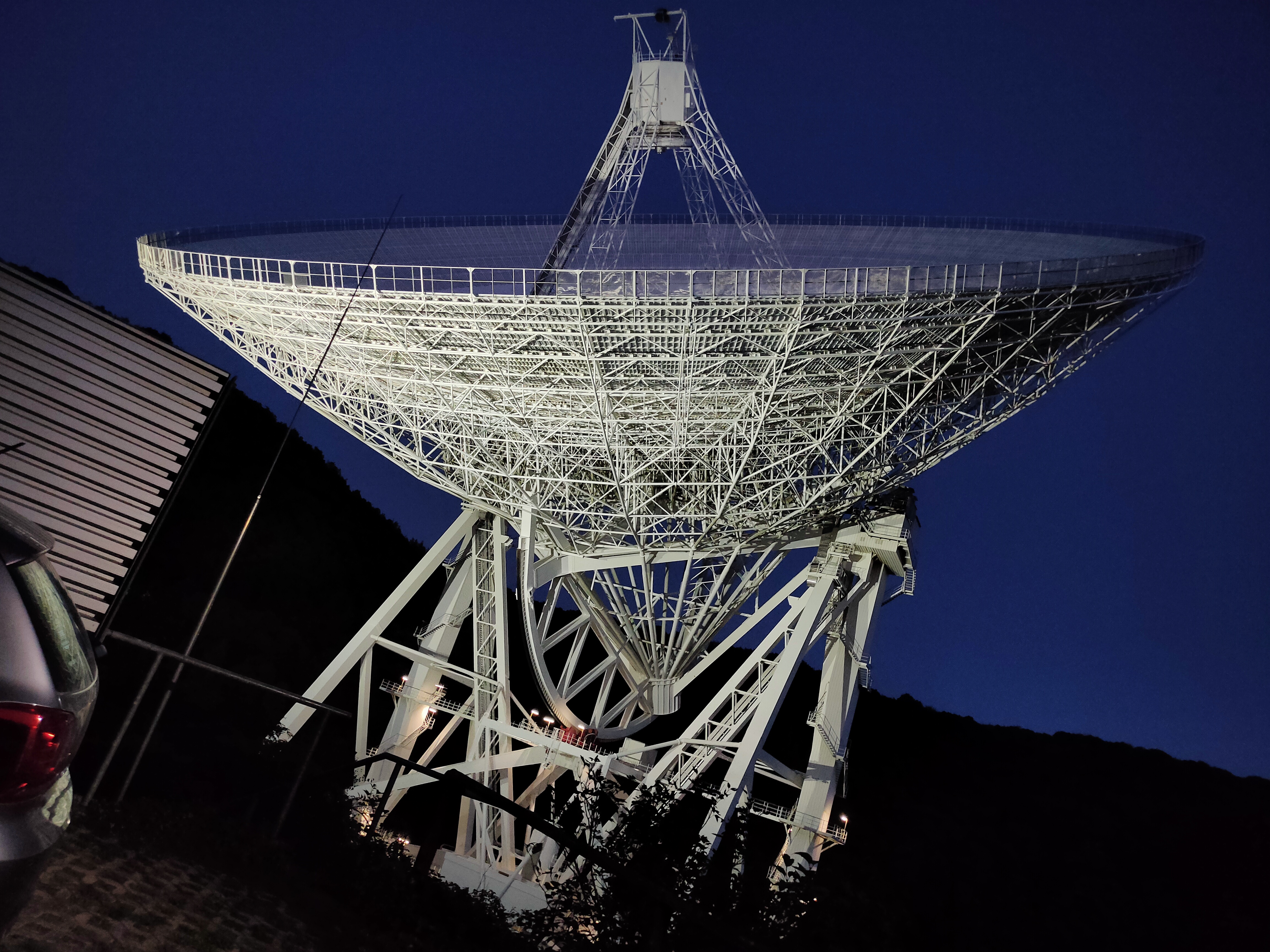
The Effelsberg radio telescope at night. Since our observation time spanned 16 hours, it helped to get outside every once in a while to stay awake and admire the illuminated, gigantic radio dish in the meantime.
The process of observing itself is relatively simple and straightforward due to a control program, with which it's easy to switch between our two desired frequency bands and schedule observations of each individual blazar. However, the really demanding task is to keep an eye out for how long a source will still be visible and especially to look out for those sources that are only visible for a short amount of time due to their position on the sky. So, there we were sitting anxiously, because we had to figure out in which order to observe the soon to be setting, distant galaxies, but eventually we got the hang of it and could enjoy seeing the telescope move every half hour, commanded by us. The large windows of the observing room allow a terrific view onto the huge radio dish, which is - I haven't mentioned it yet - 100 meters in diameter, making it one of the largest steerable radio telescopes in the world. Since we were very lucky regarding the weather (no wind, no clouds), we could use the full time that had been reserved for the monitoring program. Our observations took until the next morning around 8 AM and with a little bit of taking turns in sleeping, we could manage to use the second day to start learning the data extraction procedure.
On the third day, after we had completed our training in reducing and calibrating the radio data, a very special treat was still awaiting us: we were going to go onto the radio telescope. And we were going to be inside the primary receiver while the telescope is moving around. These things you can do with a large radio telescope! As somebody who is familiar with the fear of heights, I was both excited and nervous about this little expedition, since I knew that the whole structure on which one can move around, is not solid, but see-through. The reason for this is clear: it is necessary to have a very stable structure, however, it is also favorable to keep the whole construction as light as possible. Still, the radio dish and its mounting weigh about 3200 tons. In order to make it easy for us to walk to the primary receiver, the telescope was tilted to a few degrees, such that it seems to be looking at something at the horizon. The primary receiver is in the big 'box', which is connected to the dish via three pole structures, one of them containing a gangway and a ladder, which are used to get to the box depending on the tilt of the telescope, respectively.
Going to the primary receiver, we used the gangway, which was quite comfortable apart from the fact that one was more than 50 meters above the ground. Arriving at the receiver box, we climbed into it, and after we locked ourselves in, we gave the signal that we were ready for tilting. Now the fun part began! We knew that eventually the room will be tipped 90 degrees from how we entered the room, but still it was a very interesting experience to feel how one own's perception of a room can suddenly change. Slowly, the wall on which we were leaning became the floor and after a few minutes the room looked fairly different. Before we went down into the dish, we got outside and on top of the receiver box, from which we could admire the view over the hills of the Eifel.
Lastly, we entered the radio dish via a very steep ladder, which might not be for everyone, but well, how else could we get down anyway. Standing inside the dish and knowing that this construction is able to detect radio emission from the depths of the cosmos, it seemed somewhat astonishing to me that we can even measure those distant and weak signals. Compared to optical astronomy, radio astronomy is a relatively young field and has only been around for a few decades, since the 1960s. The build of the Effelsberg radio telescope had been finished a little bit later, in 1971, and will be celebrating its 50th anniversary next year. In those 50 years scientists have made an immense amount of discoveries, from cosmic magnetic fields over water in distant galaxies to millisecond pulsars, and many, many more. Given that the Effelsberg telescope and all of its belonging hardware is kept up to date, chances are good that radio astronomers will be successful in eliciting more secrets of the cosmos in the future.
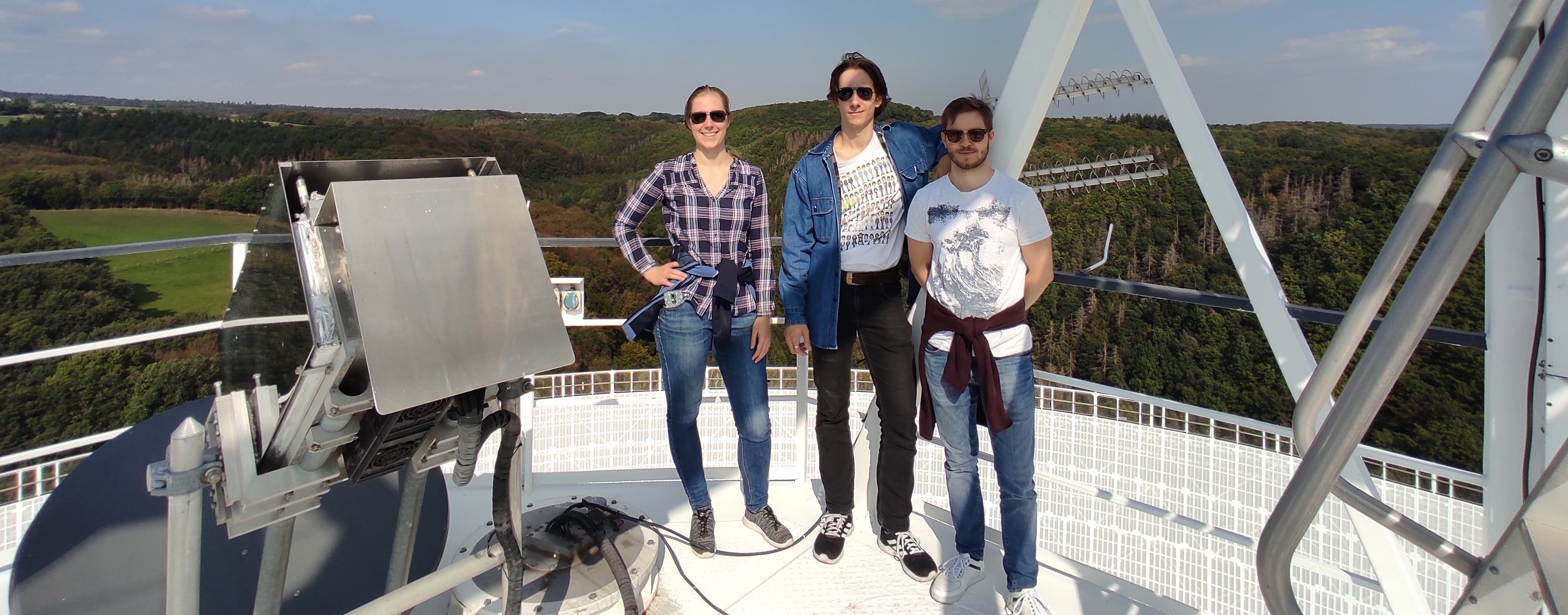
On top of the receiver box at more than 100 meters above the ground. Only from there it is possible to peak outside the valley in which the Effelsberg telescope is placed.
For us the visit of the Effelsberg telescope was a very pleasant and interesting mixture of work and enthusiasm for exploring the Universe, and although the next observations for the monitoring program are planned to be operated remotely, we hope to return next year for more on-site observations.
If you're interested in visiting the Effelsberg radio telescope, check out their official website for information regarding visits and public talks. Please note that my personal experience portrayed in this article refers to a visit as an observer, not as a tourist. The entry of the telescope is not permitted for the general public.
